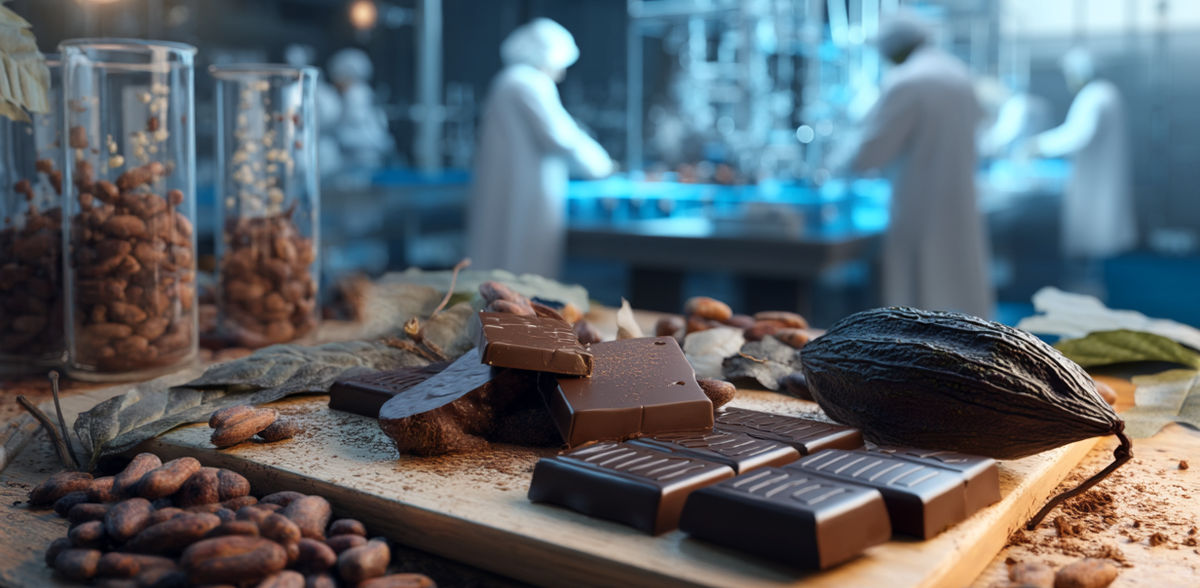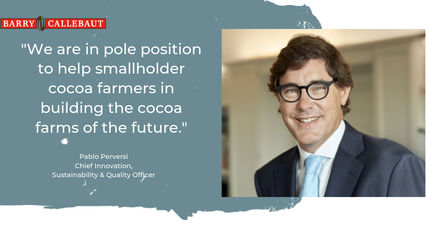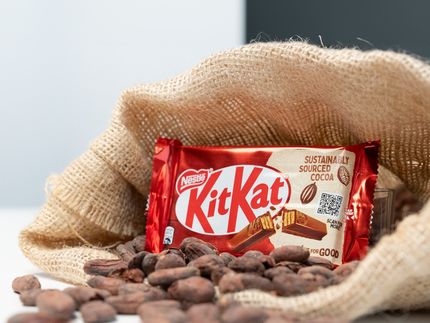Shortage and rising prices in the chocolate industry: will lab-grown cocoa save our chocolate bunny?
Advertisement
Just in time for Easter, rising chocolate prices are hitting consumer sentiment: the cost of cocoa beans has almost tripled within a decade. The challenges of traditional cocoa production are increasing due to climate change, rising pest levels and stricter regulations. In addition, the beans only grow in a few regions. While manufacturers are increasingly being forced to reduce the amount of cocoa in products and replace cocoa butter with palm fat, for example, cell-based cocoa and innovative approaches to cultivation could be a sustainable and economical alternative. German chocolate manufacturers are also already researching and investing. But when will the new technologies reach the necessary market maturity and what impact will they have on the future of the industry?
The chocolate industry is facing a turning point: climate change, rising costs and new regulatory requirements are posing significant challenges to traditional production methods. Between 2014 and 2024, cocoa prices rose by 177% worldwide. The main causes are climatic influences such as prolonged periods of drought, particularly in West Africa, where around 70 percent of global cocoa bean production takes place. Diseases such as the "swollen shoot virus" or "black pod disease" destroy up to 20 percent of the harvest every year. In addition, land use conflicts caused by illegal mines threaten valuable cultivation areas. At the same time, global demand is growing by 3.5% annually, particularly in Europe and North America. Increasing regulation is exacerbating the situation: from December 30, 2025, the EU Deforestation Regulation will come into force for large importers, with a deadline of June 2026 for smaller companies. It obliges importers to prove that their cocoa products have not contributed to deforestation. Companies therefore need to rethink and invest in alternative production methods. Technologies such as cell-based cocoa from the laboratory and Controlled Environment Agriculture (CEA) offer new opportunities here. CEA describes cultivation methods in controlled environments such as greenhouses, which are intended to enable climate independence and higher yields. "These innovations could revolutionize the entire chocolate production value chain and help to meet growing demand in a more sustainable way," says Adrian Kirste, consumer goods expert and partner at Kearney. "Especially for companies that want to diversify their supply chains and minimize risks, these technologies could be crucial."
Still too expensive: cell-based cocoa costs five times as much
At present, however, cell-based cocoa is still around five times more expensive than the conventionally produced product, with no difference in texture or taste. "With increasing scaling and technological advances, we expect that laboratory cocoa will be able to compete with conventional cocoa in terms of price within ten years, and in the long term it should become even cheaper," explains Kirste. Too long, considering that cocoa and chocolate prices in Germany are already through the roof and some products are no longer available. According to Kirste, production in greenhouses is therefore a kind of bridging technology, but one that has the potential to become an integral part of agriculture in these countries in the long term: "Indoor farming enables consistent quality and yields and can bring production closer to processing or consumption centers, which makes logistics much easier." Examples of companies that are already using CEA include Gotham Greens, with rooftop greenhouses that use renewable energy, and Freight Farms, with modular hydroponic farms in shipping containers. However, the sustainable cultivation method is still quite capital-intensive and it is difficult to ensure profitability for raw materials or low-priced products.
Sustainability through technology
These economic prospects also complement the ecological benefits of the new technologies. Cell-based cocoa is produced using an innovative biotechnological process. Cells are first removed from a cocoa plant and multiplied in a nutrient-rich solution. They are then grown in bioreactors, where they are fermented, dried and roasted in a controlled manner to develop the desired flavor and texture. "This process enables sustainable and consistent cocoa production that is independent of climatic fluctuations, crop failures or pests," explains Kirste. The use of cell-based cocoa and cultivation in controlled environments reduces deforestation, minimizes the carbon footprint and protects tropical ecosystems, while traditional cocoa plantations contribute significantly to deforestation. "Cell-based production could be a game changer to reduce the environmental impact in the long term," says Kirste. Especially in regions such as West Africa, i.e. the Ivory Coast or Ghana, which are regularly affected by crop failures, such innovations could make a decisive difference.
Approval could still take some time
However, despite the ecological benefits, the new technologies still face regulatory hurdles. Approval procedures take different lengths of time depending on the region: in the USA, the FDA (US Food and Drug Administration) approval process is expected to take between one and three years. While existing approvals for cell-based products primarily relate to the meat and fish sector, approval for plant-based cell culture products would be new. In the EU, the approval process for novel foods via the European Food Safety Authority (EFSA) could take three to five years. "The biggest challenges relate to food safety, in particular toxicity and allergenicity, as well as labeling," explains Kirste. Dealing with genetic modification also remains a sensitive topic of discussion. Nevertheless, he is optimistic that market maturity can be achieved in the foreseeable future. "Companies should invest in these alternative technologies at an early stage and keep a close eye on regulatory developments," emphasizes Kirste.
Hybrid models as the future of chocolate
The future of chocolate is likely to lie in hybrid models. "Cell-based cocoa will not replace conventional products, but rather complement them in a meaningful way. We see the first potential applications in the premium segment in particular, as consumers are more willing to pay more for sustainable and high-quality alternatives," predicts Kirste. In the long term, these technologies could also penetrate the mass market as production increases and costs fall. The industry's willingness to innovate and invest is crucial here. "Those who invest today could secure the Easter bunny of tomorrow," concludes Kirste.
Note: This article has been translated using a computer system without human intervention. LUMITOS offers these automatic translations to present a wider range of current news. Since this article has been translated with automatic translation, it is possible that it contains errors in vocabulary, syntax or grammar. The original article in German can be found here.

































































